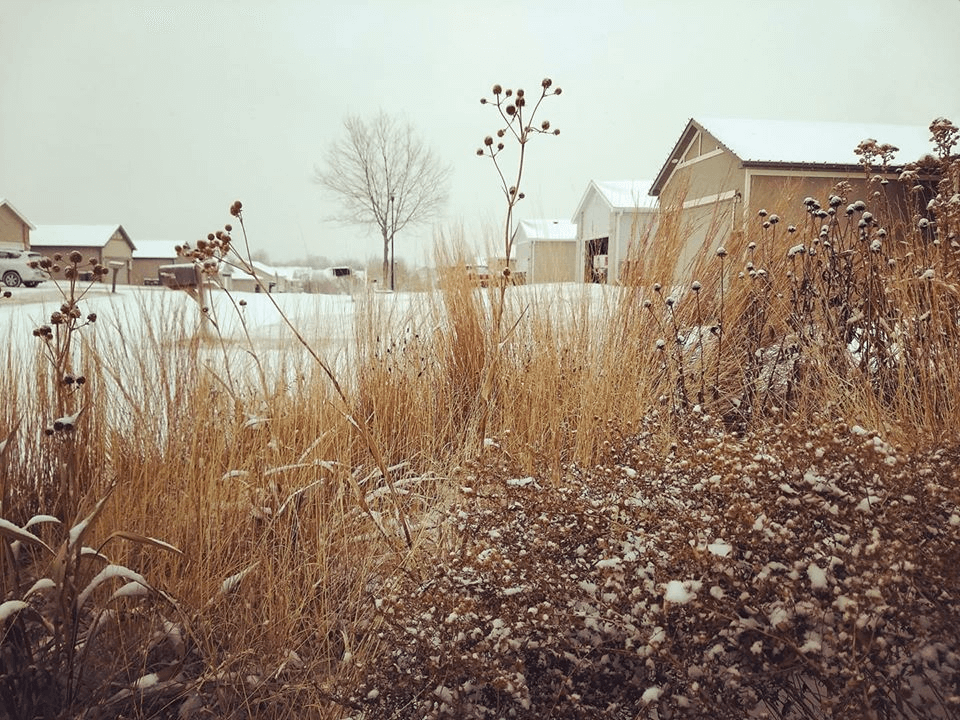
A Plant Sociability Research Journey Example
Oh that’s a cool plant, stiff goldenrod, Oligoneuron rigidum. I wonder if that would work in my garden. Maybe it’s
No, it doesn’t cause hay fever (that’s our native ragweed), so let’s get that out of the way first. Goldenrod pollen is heavy and sticky, not airborne like ragweed’s pollen, so to have an allergic reaction to goldenrod you’d most likely need to be in physical contact with it.
Which is exactly what insects and various bugs want. This group of plants is like a 20 course meal. While goldenrod pollen has become less nutritious since the advent of the industrial revolution due to air pollution and climate change, it is still critical to the health of various insects and especially solitary native bee moms caching their larval nests with food. From bees to migrating insects, to beneficial predators relying on the hive of activity around blooming goldenrod, this group of plants could not matter more in both large landscapes and smaller urban gardens. Here are a few that are worth trying for a variety of site conditions and that won’t spread nearly as aggressively as Canadian goldenrod (Solidago canadensis).
Oligoneron rigidium (Solidago rigida) — Stiff Goldenrod
You do not want this in rich, loamy, moist soil as it will become far too tall and flop. In the prairie where it’s try and ultra competitive, you’d rarely see it top three feet, but in a pampered home garden four to five is common. One of the earlier blooming goldenrods in late summer to early autumn, the flat-topped umbels are perfect perches for a variety of species — including monarch butterflies who seem to favor its nectar. Stiff goldenrod is ideal for dry, sunny sites and benefits from similarly-tall plants to support it and increase root competition. Check the 100 or so species known to use this goldenrod.
Solidago flexicaulis — Zigzag Goldenrod
Another case of the more rich and moist the soil, the more tall and potentially floppy it gets. However, this shade-loving, dry-loving goldenrod is an ideal creeper for tough locations under trees or on the north side of a building. It’s also incredibly fragrant (I like to tell people it smells exactly like my dearly-departed grandmother’s perfume). Usually about two feet tall and spreading to several feet over many years, this plant will bring in the pollinators where the sun don’t shine.
There are a plethora of goldenrods to fill our third slot, so let’s cheat. There’s showy goldenrod (S. speciosa) with a nice upright flame of blooms, but it can get 4-5 feet tall even in dry, sunny locations (shorter if faced with more root competition). Missouri goldenrod (S. missouriensis) looks like Canadian goldenrod but is only 2-3 feet tall and less aggressive, preferring it dry and sunny. If you have a larger area that’s wetter and you just need something to go go go, try grass-leaved goldenrod (Euthamia graminifolia), which takes full to part sun in medium to moist soils but will spread. If you have blazing hot sand or gravel soil try the 2 foot tall old field goldenrod (Solidago nemoralis), perfect for slopes or barren areas where little else will grow; here’s the list of pollinators noted to use S. nemoralis.

Oh that’s a cool plant, stiff goldenrod, Oligoneuron rigidum. I wonder if that would work in my garden. Maybe it’s

Sometimes we might think a garden left standing over winter isn’t as pretty, even though we know the ecosystem value
